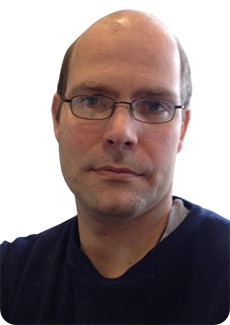
What is intravenous immunoglobulin (IVIG) therapy and what types of autoimmune disease is it used to treat?
IVIG is a hugely successful biological with FDA approval for treating idiopathic thrombocytopenic purpura (ITP), Kawasaki disease, Guillain-Barré syndrome, Graves ophthalmopathy and numerous polyneuropathies.
IVIG is increasingly viewed by clinicians as a last resort cure-all for a plethora of other diseases including: anemias, arthritides, lupus, transplant rejection, abortion, and even chronic pain, especially when these are non-responsive to conventional therapies.
You were recently awarded the 2013 Universal Biotech Innovation Prize for developing a biomimetic to replace IVIG. Why is a replacement necessary?
The global shortage and demand for IVIG is compounded by a number of other inadequacies with the current drug, the most significant being its dependency on human donors for its production, raising safety issues and greatly adding to cost.
To add insult to injury less than 5% of the injected drug (correctly glycosylated and/or oligomeric-Fc) is therapeutically active leading to a requirement for high dosages (2g/kg).
Consequently, IVIG is expensive and adverse events due to excessive IVIG loading not uncommon. There is therefore an urgent clinical need to develop synthetic replacements for IVIG for use in autoimmune diseases.
Please can you give an overview of project HexaGardTM?
IVIG suppresses harmful inflammation by engaging low-affinity inhibitory receptors and by forming immune-complexes (ICs) and/or dimers in vivo that allow IVIG to interact with these receptors with greater strength (avidity), thus mediating more potent anti-inflammatory effects.
Based on these modes of action, we therefore took a Quality-by-Design approach to generate a fully synthetic biomimetic of IVIG called HexaGardTM that currently has a number of key advantages over existing IVIG drugs, including:
-
Small (nano, same size as IgG)
-
Stable (>6mths at 4oC in buffers suitable for injection)
-
Safe (in preclinical animal models)
-
Synthesizable by cell lines used by pharmaceutical companies (CHOK1, HEK)
-
Scalable (fully compatible with existing mAb pipelines)
-
Suitable (including in IgA deficient patients)
-
Superior (effective at 50 lower concentration than IVIG)
-
Serviceable (platform technology that may benefit other Fc-fusion type drugs with FDA approval)
-
Saleable (superior cost-of-goods profile to IVIG)
What were the main challenges you faced when generating a fully synthetic alternative to IVIG and how were these overcome?
The largest hurdle for a small laboratory like ours was generating the milligram quantities of HexaGardTM to show that it has therapeutic potential. We know from these small scale purifications that it is efficacious at controlling platelet loss in ITP, but generating sufficient quantities (grams) to test for benefit in all the other autoimmune diseases for which IVIG is known effective will be the real challenge.
What impact has winning the Innovation Prize had?
It’s a huge vote of confidence in Hexagard™ and has raised awareness of the limitations and inadequacies of existing drugs. We are hoping that winning the prize will help us to leverage more significant translational funding to move HexaGardTM from proof-of-concept into the drug development pathway.
What further development is planned on HexaGardTM?
Now that we have the basic molecule we are keen to get HexaGard into patients who need it most. This involves working with collaborators and obtaining support from research funding agencies, like the MRC and The Wellcome Trust, to determine if HexaGard is scaleable and formulatable.
Are there plans to take this new drug into commercial production?
Yes, but this requires mezzanine funding in order to present potential commercial partners with a robust product for the marketplace.
What excites you most about HexaGardTM?
The sheer beauty and elegance of its molecular structure and how this relates to its therapeutic efficacy. I still remember the day our collaborator Dr Dan Czajkowsky first sent us the model and atomic force microscopy images of HexaGardTM. Its simplicity just blew me away.
Where can readers find more information?
Fc-fusion proteins: new developments and future perspectives.
Czajkowsky DM, Hu J, Shao Z, Pleass RJ.
EMBO Mol Med. 2012 Oct;4(10):1015-28. doi: 10.1002/emmm.201201379. Epub 2012 Jul 26. Review.
For more information on the Liverpool School of Tropical Medicine please visit: http://www.lstmliverpool.ac.uk/
About Professor Richard Pleass
 Research Vision
Research Vision
My research is aimed at understanding the structure and function of the Fc region of antibodies to allow engineering of the Fc to generate ‘fit-for-purpose’ drugs, vaccines and novel clinical research tools. Work is principally focused on malaria and idiopathic thrombocytopenic purpura (ITP).
Biography
-
2013 Universal Biotech Innovation Prize
-
2009 Royal Society Theo Murphy Blue Skies Award.
-
2004 MRC Career Establishment Award.
-
2004 European Union Fp7 Marie Curie Excellence Grant.
-
1999 Wellcome Trust Advanced Training Fellow.
-
1995 UCB Pharma Institute of Allergy Travel Laureate.
-
1994 PhD, Imperial College of Science Technology & Medicine
-
1991 MSc, London School of Hygiene & Tropical Medicine
-
1990 BSc(Hons), King’s College London